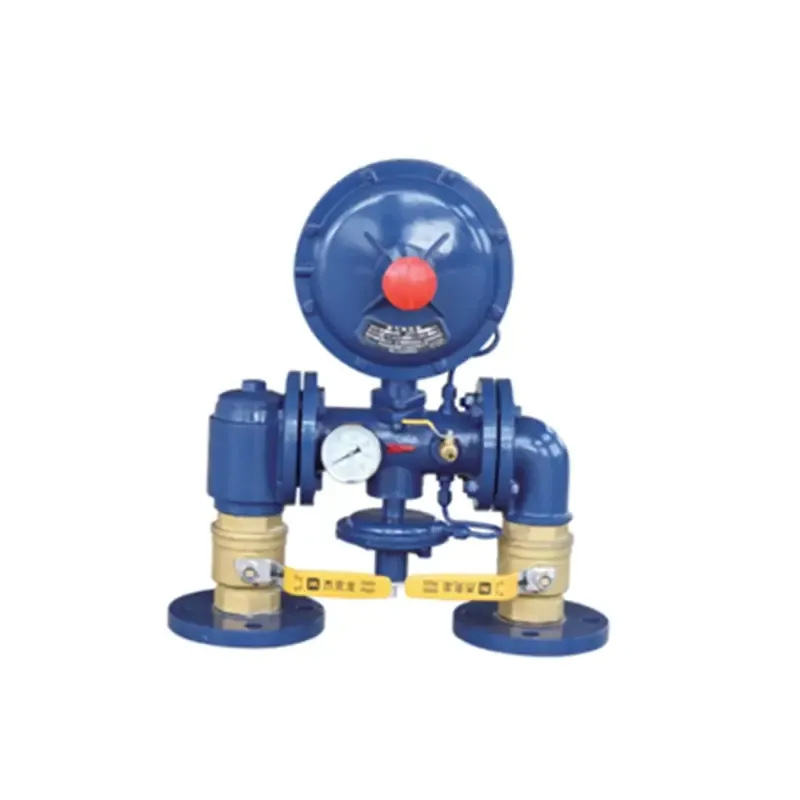
10 月 . 13, 2024 22:57
Back to list
Pressure Relief Valves and Their Importance in Industrial Applications
Understanding Pressure Relief Valves An Essential Safety Component
Pressure relief valves (PRVs) are critical devices used in various industrial applications to maintain safe operations by controlling the pressure within a system. Their primary function is to prevent equipment failure, explosions, or hazardous situations caused by excessive pressure build-up. This article explores the working principles, types, applications, and importance of pressure relief valves in various industries.
Working Principle
A pressure relief valve operates by automatically releasing pressure when it exceeds a preset limit. This mechanism is based on the balance between the pressure of the fluid within a system and a spring-loaded mechanism within the valve. When the system pressure exceeds the predetermined setpoint, the pressure overcomes the spring force, causing the valve to open and relieve excess pressure. As the pressure drops, the valve closes again, maintaining the system within safe operating limits.
Types of Pressure Relief Valves
There are several types of pressure relief valves, each designed to suit different applications
1. Spring-Loaded Relief Valves These are the most common type, using a spring mechanism to maintain a set pressure. They are ideal for applications where precise pressure control is required.
2. Pilot-Operated Relief Valves These use a smaller pilot valve to control the opening and closing of a larger main valve. They are suitable for high-pressure applications and provide better pressure regulation.
3. Bursting Discs Although not a traditional valve, bursting discs are designed to rupture at a specific pressure. They provide a fail-safe mechanism but do not offer adjustable pressure settings.
4. Balance Valve These are used to maintain a constant downstream pressure by balancing the forces acting on the valve. They are mainly employed in fluid distribution systems.
.
Pressure relief valves are crucial in various industries, including
صمامات تخفيف الضغط

- Oil and Gas In the oil and gas sector, PRVs safeguard processing equipment, pipelines, and storage tanks from explosive pressures that can arise during drilling, refining, or transportation of fuels.
- Chemical Processing PRVs are vital in chemical plants to prevent reactions from getting out of control, which can lead to catastrophic failures.
- Power Generation In power plants, pressure relief valves protect boilers and turbines from overpressure conditions, ensuring safe and efficient operations.
- Manufacturing In manufacturing processes, PRVs are used in hydraulic systems, compressors, and other equipment to maintain safety and reliability.
Importance of Pressure Relief Valves
The significance of pressure relief valves cannot be overstated. They are
- Safety Devices By preventing overpressure conditions, PRVs protect personnel and equipment, reducing the risk of accidents and injuries.
- Regulatory Compliance Many industries are subject to strict regulations regarding safety and environmental standards. Pressure relief valves help companies to comply with these legal requirements.
- Operational Efficiency By maintaining the proper pressure levels within systems, PRVs contribute to the efficient operation of equipment, reducing downtime and maintenance costs.
- Cost-Effective Solutions Investing in quality pressure relief valves can save organizations substantial amounts in damage prevention, insurance costs, and potential legal liabilities.
Conclusion
In conclusion, pressure relief valves are indispensable components in modern industrial systems. Understanding their function, types, and applications is crucial for ensuring safety, compliance, and efficient operations across various sectors. Regular maintenance and testing of PRVs are essential to guarantee their reliability and effectiveness. By prioritizing the implementation and upkeep of these valves, organizations can significantly reduce the risks associated with pressure-induced failures, thus safeguarding their assets and personnel.
Latest news
-
Unlocking The Quality Gas Pressure ReducersNewsNov.01,2024
-
The Role of Gas Pressure Reducing StationsNewsNov.01,2024
-
The Importance and Functionality of Safety Relief ValvesNewsNov.01,2024
-
The Essential Role of Safety Valves in Natural Gas ApplicationsNewsNov.01,2024
-
The Essential Role of Gas Pressure RegulatorsNewsNov.01,2024
-
Enhance Your Premium Gas FiltersNewsNov.01,2024

